There was a discussion one day among friends, in front of some works by Tomoko Nagao, a Japanese artist born in Nagoya but who has been living and working in Milan for years, about what had been, for Japanese figurative culture, the most evident, concrete and lasting legacy of the atomic bomb. This topic, moreover, has been little addressed in our latitudes, and has begun to creep into the interests of Western critics only relatively recently. A first reconnaissance was offered by the exhibition Japanese Art after 1945: Scream Against the Sky, which started in Yokohama and then stopped at the Guggenheim and the San Francisco Museum of Art: with a title borrowed from the third movement of a composition by Yoko Ono(Voice Piece for Soprano), the exhibition curated by Alexandra Munroe reviewed the avant-garde of the Gutai group, which, in some ways, anticipated Western practice of performance (and beyond), and then examined the Bokujinkai collective that revisited the tradition of Japanese calligraphic art in a modern key, went through the neo-dada experiences of the Hi-Red Center, the anti-classicism of Mono-Ha, names better known even in our parts (such as those of Yayoi Kusama and Tetsumi Kudo), and finally to the rebellious, anti-militarist and ecological art of Yukinori Yanagi and the micropop of Takashi Murakami. Munroe’s “canon” has since been expanded and deepened on several occasions, especially in the United States, but its basic framework remains valid.
Tomoko Nagao’s references appear in all their clear evidence. When one looks at the images of Murakami and the Superflat movement, when one is confronted with the products of micropop culture, it is sometimes difficult to think that our eyes are lingering on works that spring from a strong, living, throbbing political substratum. And Tomoko Nagao, punctuate the presentations of her exhibitions, figures among the biggest names in Japanese micropop active in the West. “Micropop” usually means an art that fuses the imagery and aesthetics of manga with certain elements of Western Pop Art, above all the inevitable references to consumer society. The term, which saw the light of day in 2007, is credited to Midori Matsui, who uses it to delineate a trend that emerged in the early 2000s: “Micropop can be defined simply as an art that invents, independently of any explicit ideology, a unique aesthetic or code of behavior by rearranging small fragments that accumulate through different communicative processes.” John Clammer identifies five elements of this: playful interventions in urban or suburban situations, the use of child or adolescent imagery, free association, the attempt to reveal the “immeasurable dimensions of life,” and the reuse of elements inferred from popular media. That is, television programs, comic books, and so on. The latter aspect is crucial for Midori Matsui, because this unique form of reuse helps to compose a “critical meta-narrative about the artist’s own relationship with his culture.” Micropop, then, as “micropolitics,” Matsui would say.
Now, one might begin with one of the most famous images in Tomoko Nagao’s repertoire. The Birth of Venus with Baci, Esselunga, PSP and Easyjet is perhaps her best-known work, which has also been exhibited in the past alongside the Botticelli Venus at the Gemäldegalerie in Berlin: a contemporary reinterpretation of Botticelli’s Venus, reduced to a kawaii mask floating in a sea of Barilla spaghetti wrappers, Baci Perugina and shopping bags, dragged no longer on the shell, but on a video game console, while on the right her handmaiden rushes in with a veil and especially a jar of Shiseido cream and far away, in the sky, swarms of Easyjet planes fly. It is the typical language of the Nagoya-based artist: the great works of the past come alive transfigured in the society of fast food, of last-minute vacations on low-cost flights, in the society where it matters above all to appear, where everyone follows the same patterns of life, where a phrase hidden inside a praline gives a glimpse of happiness in a day that repeats itself the same as a thousand others, in turn multiplied by thousands more, and where we cling to the flight to Formentera taken at a discount to remind ourselves once a year to be alive. And if it is true, thinking back to Giulio Paolini, that works of art are watching us, then it is also true that works of art from the past are long-lived witnesses: here, beyond the natural reference to the mingling (or “contamination,” as they say) between Western and Eastern cultures, is the sense of their presence in Tomoko Nagao’s micropop revisitations.
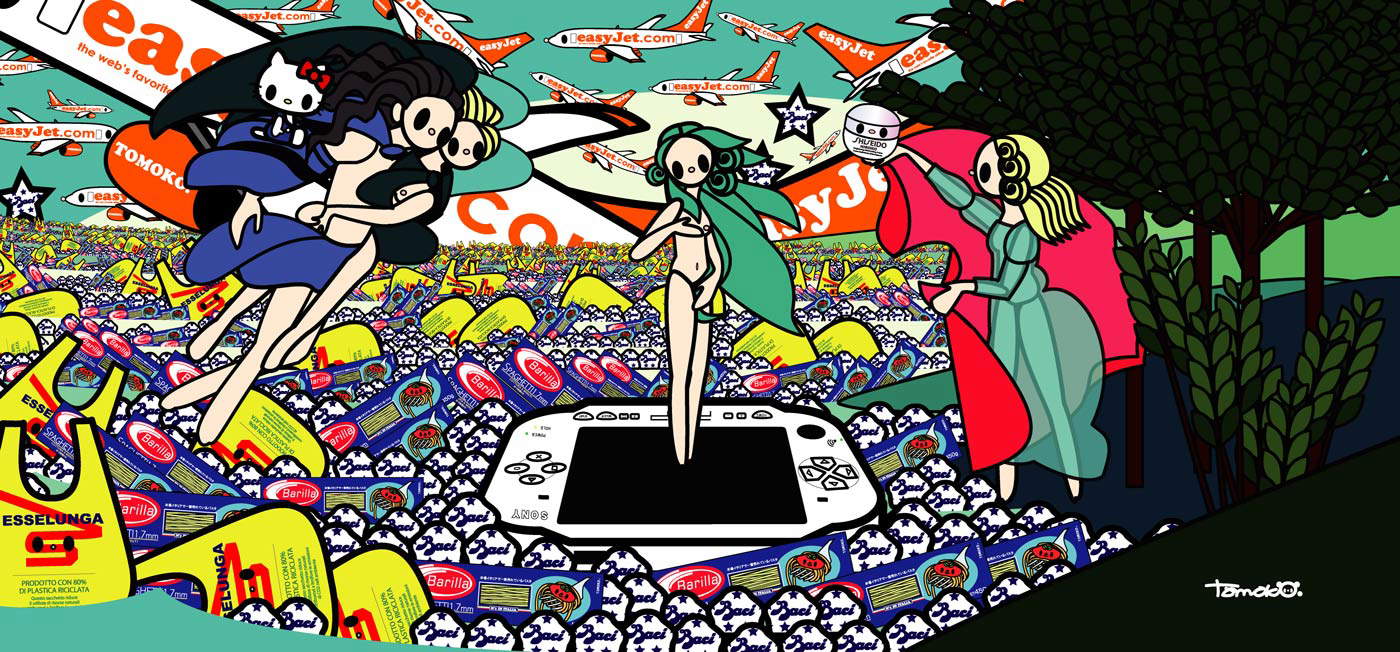
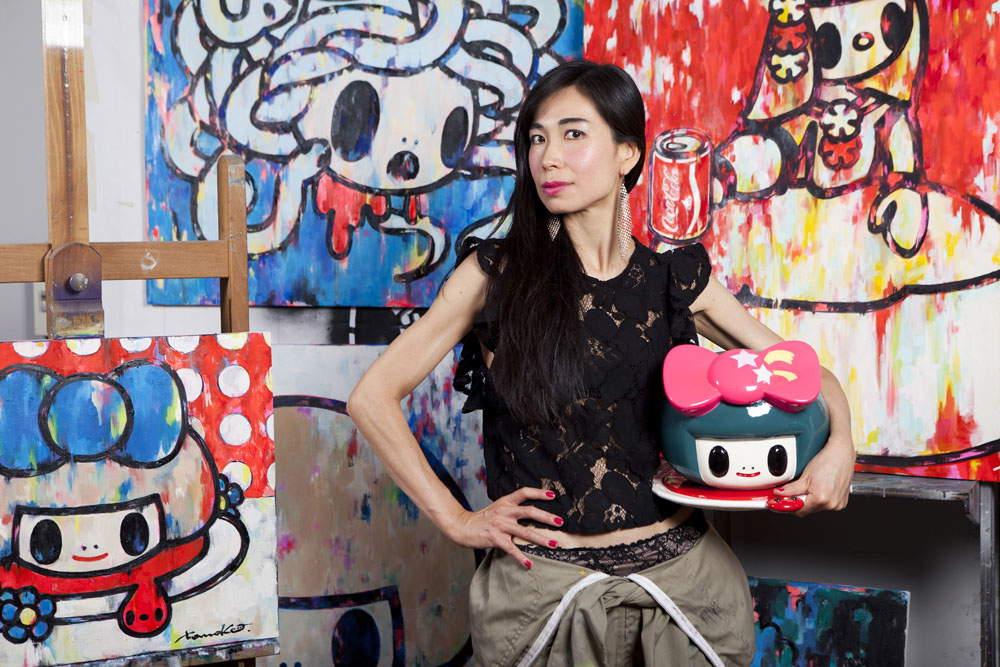
In the catalog of a recent monographic exhibition of Tomoko Nagao’s work entitled Iridescent Obsessions, held at Deodato Arte in Milan in 2018, the Japanese artist is referred to as the “ambassador of otaku art in Italy”: by otaku we mean, trivializing to the extreme, the Japanese subculture of fans of comic books, cartoons, video games, and technology. It is a statement that tends to highlight not only the cultural, but to some extent also the political origins of Tomoko Nagao’s art. For Murakami, recourse to otaku culture was a necessity. And exhibiting his and his compatriots’ works in America, in a show with the programmatic title Little Boy held in 2005 at the Japan Society in New York, was tantamount for him to an opportunity to show Japan to Westerners. “Japan,” he said in 2006, "has gone through a long journey from the atomic bomb and defeat in war to arrive at this culture. The atomic bomb created a trauma in the Japanese psyche. Japan became America’s puppet, unable to make decisions independently. But in exchange for autonomy, the Americans gave us peace. So I wanted the West to know this singular and indisputable fact, namely that the otaku subculture is necessarily art in Japan.“ Such an assertive and polemical stance has not gone unnoticed, especially since attempts to more or less precisely brand the term ”okaku" have taken center stage in recent Japanese cultural debate, and have produced a large body of scholarship, ranging from sociology to philosophy, from art to psychology. However, it is interesting to note, beyond the accuracy of definitions and the extent of appropriations, that there subsists in Murakami a strong and explicit element of criticism of the West and globalization. And so, if it is necessary to recognize in Tomoko Nagao a role in disseminating certain elements of the otaku subculture (or if it is necessary to look at the latter as a point of departure for his research, as critic Christian Gangitano has noted), it will be equally necessary to see against the light in his works a kind of continuous allegory of the globalized world interpreted with light elegance, with delicate irony, with a poetry that the artist “brought with her from the East, from manga culture, from books printed on Japanese paper,” as Chiara Gatti noted, and that invariably softens the image, but without her precise esprit géometrique losing finesse, without her weapons coming out any less sharp.
Anyone who tries to search for news about Tomoko Nagao will find tons of articles associating her with the kawaii aesthetic, a term for something seemingly innocent, childlike, graceful, ornate, and which is often translated into Italian as the adjective “cute.” Yet the process of “kawaiization” (the reader glosses over this ugly noun) to which the great masterpieces of Western art in Tomoko Nagao’s work go does not detract from the strength of their content. In some cases, indeed, it helps make it explicit: one of the goals of Tomoko Nagao’s art, stated by the artist herself, is to employ images that everyone knows so that they can reach everyone. And so, the memento mori that can be read among the petals of Jan Bruegel’s flowers preserved at the Pinacoteca Ambrosiana in Milan is highlighted by the presence of pills, skulls and disinfectants, with the aggravating circumstance that it seems we can no longer breathe in the scent of a flower because the alternative is to stuff ourselves with Rinazine and Aspirin to tame the effects of allergies, and that the collective anesthetization caused by this continuous taking of medicines distances us from the wonder of nature. Or, in another work, the vanitas of ancient times is that of modern fashion bloggers on the one hand and brands on the other competing to vie for them: so here are flowers swamped by Chanel designer lipsticks, Dolce & Gabbana sunglasses, the ubiquitous Shiseido cream, and smartphones flooded with notifications. The flowers are a frill, they vanish under a deluge of brands that extinguishes the ringing freshness of Bruegel’s colors, they lose their consistency under the rain of rampant frivolity, they become helpless spectators of this continuous and frenzied chase after the useless: Tomoko Nagao thus proceeds with her denunciation of a “society that, through social networks and the self-referential hyperactivity proclaimed in selfies,” writes Gangitano, “lives a phase of continuous vanitas, but deeply lost and devoid of ideal values.”
Not even the workers of Pellizza da Volpedo’s Fourth Estate are saved from the “cute” but disenchanted world of Tomoko Nagao, who now, dressed in Armani suits from head to toe, in an eerie and alienated vision, stroll toward aperitifs clutching bottles of Campari, have had a cascade of Visa cards literally raining from the sky, enjoy an illusory well-being made up of stacks of panettone, Alitalia flights to exotic destinations, and Pirelli tires. It is “pragmatically American,” Pasolini wrote, the “new fascism,” that of brutal homologation. And homologation, in Tomoko Nagao’s satire, has also overwhelmed Pellizza da Volpedo’s workers.
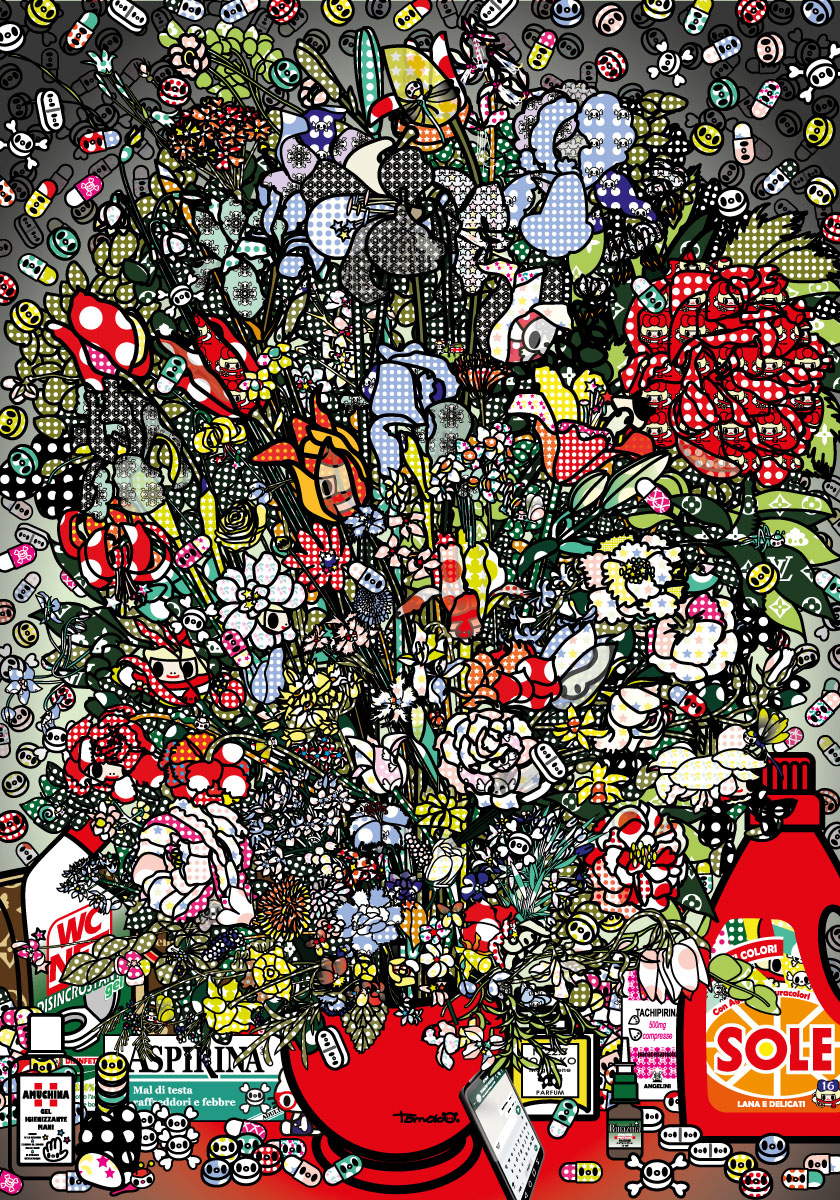
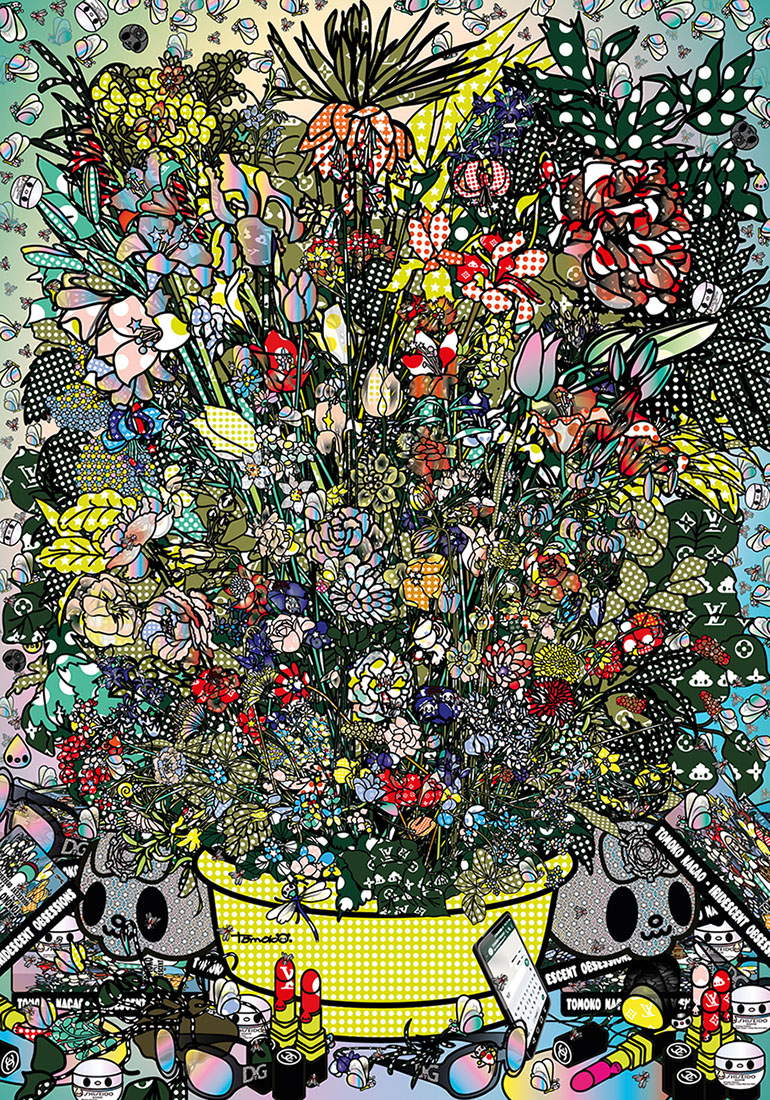
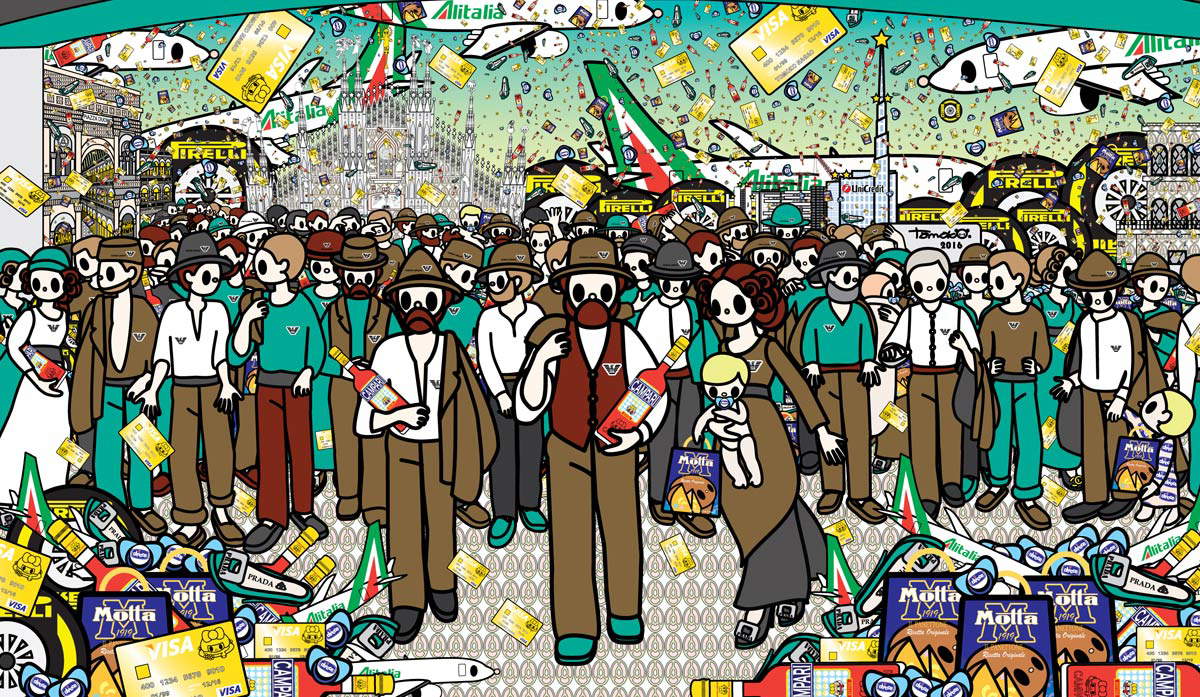
The Fourth Estate is perhaps the pinnacle of Tomoko Nagao’s demythologization of the great icons of art history. At other times, on the contrary, her poetry loses this desecrating intonation, and rather acknowledges to the masterpieces of the past their status as pop icons, albeit “with surrendering tenderness,” as Chiara Gatti has observed: Leonardo da Vinci’s eternal Mona Lisa, Cranach the Elder’s bewitching and longiline Eve, Jan Vermeer’s sweet, elusive and enigmatic Girl with a Pearl Earring are transformed into Hello Kitty silhouettes that, especially in oil paintings, emerge washed out against backgrounds that are themselves blurred, as if to say that by dint of seeing the masterpieces of past art reproduced everywhere, their aura has begun to flake away, their image has begun to become whipped and worn, their content is inexorably fading bit by bit.
It is therefore not with insolence that Tomoko Nagao approaches the works of ancient art. Hers is not the impertinent gesture of the provocateur who transforms a Venus or a Judith into a Hello Kitty in order to attempt a stupidly iconoclastic staging, which would be unrealistic and out of time. Instead, it is with deep respect that the Japanese artist offers to the concerning his extremely timely reading not so much of ancient art masterpieces per se, but of their status, of the often distracted and superficial way in which we look at those works today. When, for example, their images scroll across our smartphone screens, and we dwell on them just long enough for a like. When they accompany shoddy advertisements. When we find them stamped on fourth-rate consumer products. Nor, however, is it a moralistic art, indeed: there is no moralism in Tomoko Nagao’s art. It is an analysis. An analysis, Gangitano again writes, “critical and yet still playful, playful, kawaii [...],” which operates according to a “typically micropop attitude”: in Salome, for example, “globalization” and “Tomoko herself as a brand-artist made figure bring their decapitated heads as gifts to us consumers and conscious victim-artists of injustice and environmental disasters.” If Salome had asked Herod for the head of the Baptist as a brutal gift, Hello Kitty’s head, in Tomoko Nagao’s work, also takes on the same significance. Tomoko Nagao’s art is simply an ascertainment of what is happening. An observation with satirical overtones, one might argue, but one that does not aim to give us directions or instructions. Tomoko Nagao wants to show us what is happening.
And she wants to show it to us in light and elegant language. Tomoko Nagao has “the grace of a vestal in a temple ofadvertising,” writes Chiara Gatti. “With a light hand she dunks past masterpieces in colorful tins neatly lined up on her work table. In a hypnotic compendium of Japanese culture and psychedelia, quotations from ancient art, cartoon or underground, a manga version of each masterpiece that ended up in school books takes shape.” Her images clothe themselves with the lightheartedness of manga and anime imagery to convey eminently political content, which only on the surface may seem childish, futile, superficial: on the contrary, Tomoko Nagao’s art digs deep, protected by a thin, fragile, illusory veil of playful serenity. And the lightness is nothing but a further reference to the superficiality of consumerism. The very choice to focus attention on the female figures of ancient art implies a reflection on the desire to bring out a femininity that in history has always been subjugated by male domination: Tomoko Nagao’s Venuses, her Mona Lisa, and her Girls with Pearl Earring intend, on the one hand, to remark on the freedom of women, and on the other hand allude to the very condition of women in contemporary society. Beneath her surfaces populated with seemingly cute and harmless characters there exists a network of meanings that emerge and re-emerge, activate, add up, and sediment.

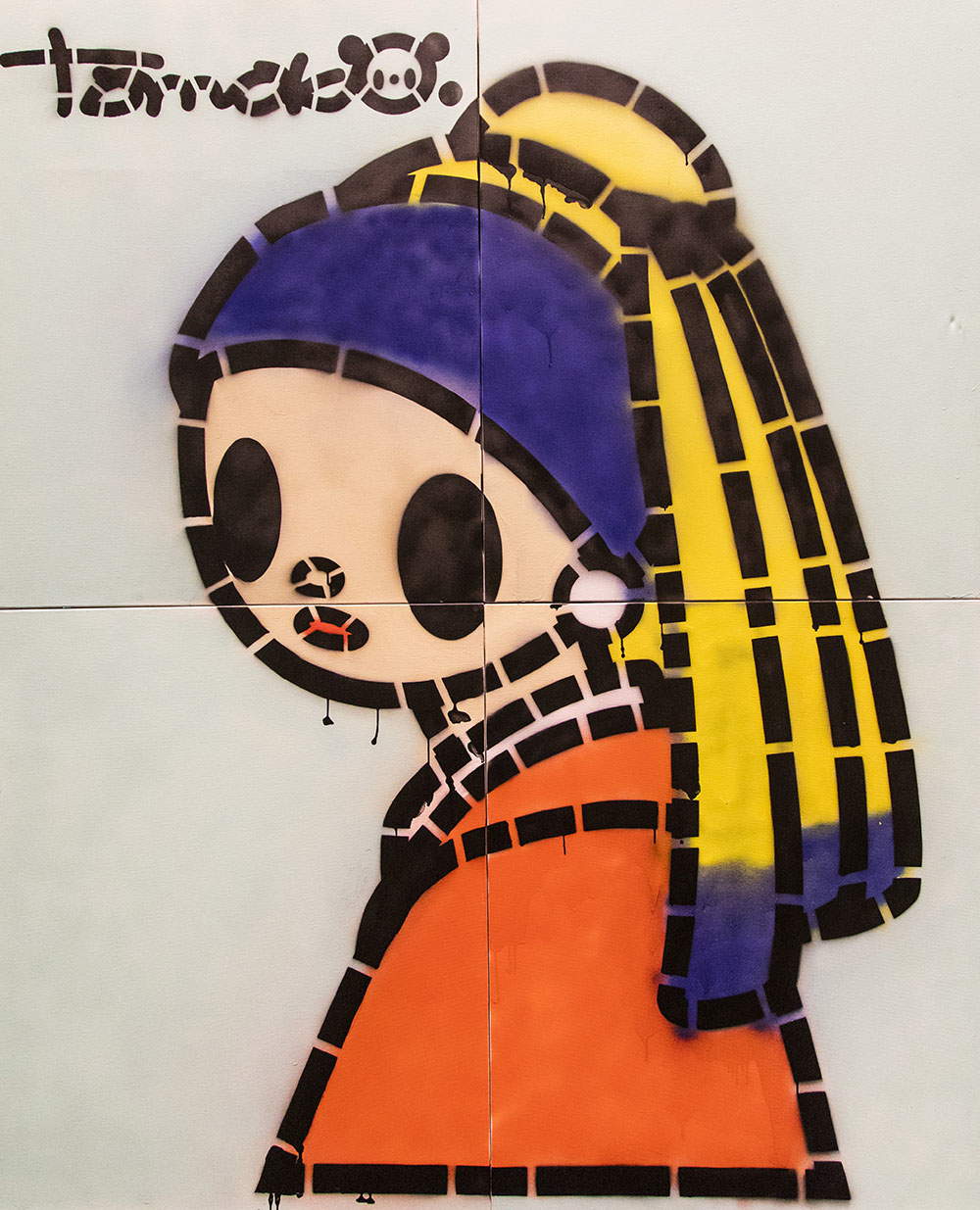
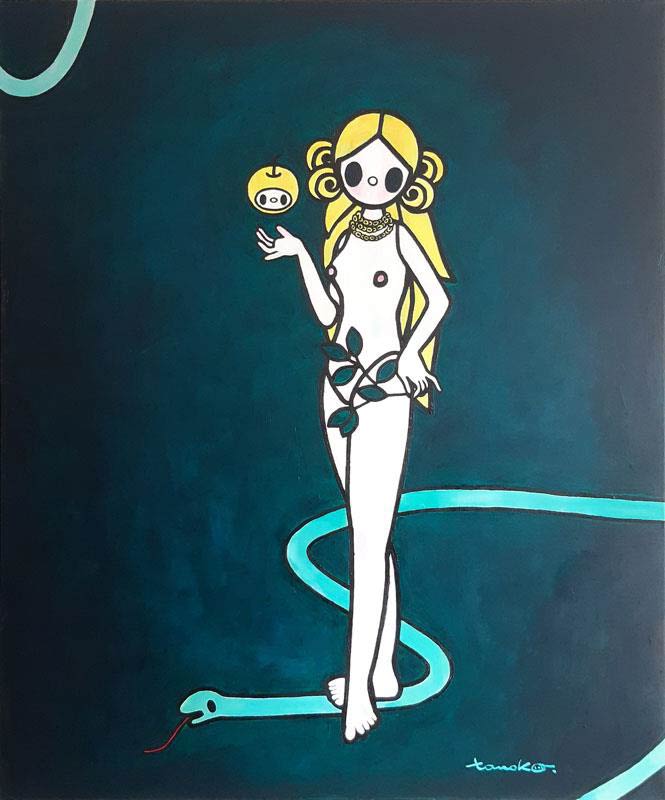
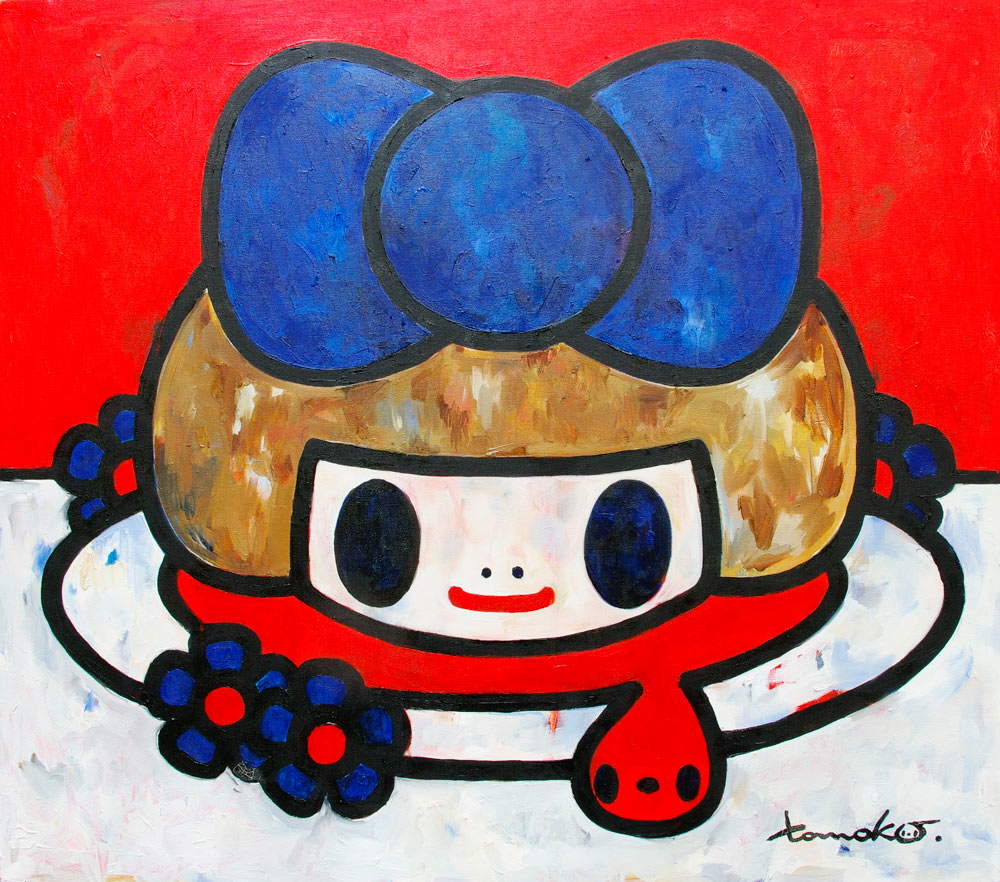
There is no medium that Tomoko Nagao has not experimented with in her practice. Indeed, the medium itself can be considered a non-secondary part of her research, especially when one thinks of multiples and digital prints, one of Tomoko Nagao’s favorite mediums: her own art, with supreme self-mockery (but also recalling the lesson of Andy Warhol), becomes a mass-produced, repetitive product, sold at affordable prices. And then oil paintings, urban interventions, works on Plexiglas, digital works, resin sculptures. Tomoko Nagao even used inflatables, installing them in the public square: a huge Balloon with a blue-haired Salome with a pink bow à la Hello Kitty was thus parodying a monument.
It should then be noted how Tomoko Nagao’s means also often belong more to Western culture than to that of her country. However, it would be limiting to justify such extensive recourse to the culture of Europe only by taking into consideration the fact that the artist lives in Milan: generations of Japanese artists born after the war grew up with Western culture, studied and learned Western art. If Japonism played a decisive role in guiding the research of the most innovative artists of the late nineteenth century, for postwar Japan one can easily speak of Occidentalism: even micropop art is a consequence of it. It is in the definition of a Japanese artistic culture through continuous critical confrontation with the West that the legacy mentioned at the beginning must be found. Murakami’s way, one of many, has been to define a kind of national art of wide access and even easier export, capable of leveraging the Japanese imagery best known in the West, in order to place itself in a critical perspective towards Western art: the mere idea of a “Superflat” movement, which therefore denies the search for the third dimension that has been for centuries among the greatest overheads of European artists, is alone sufficient to convey this idea. Tomoko Nagao’s path departs from that of the Superflat to mitigate in part the cultural clash (indeed, East and West are part of a single history), but without retreating before the will to detect the contradictions of our society. And to find the premises we have to go back more than seventy years.
Warning: the translation into English of the original Italian article was created using automatic tools. We undertake to review all articles, but we do not guarantee the total absence of inaccuracies in the translation due to the program. You can find the original by clicking on the ITA button. If you find any mistake,please contact us.